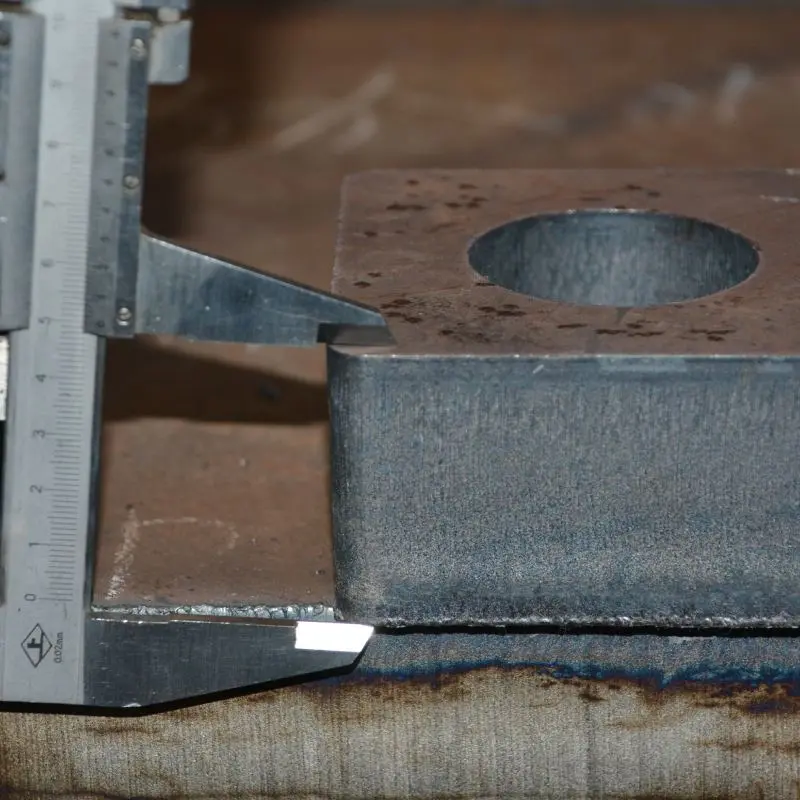The furniture industry has come a long way since the days of handcrafted wooden chairs and tables. Contemporary consumers demand a wide variety of styles, materials, and textures, and manufacturers have to keep up with the latest trends and techniques in order to remain competitive. One of the most versatile and efficient fabrication technologies that has emerged in recent years is metal laser cutting. In this guide, we will explore the benefits of using laser cutting for furniture design and manufacturing, as well as some practical tips and examples of successful metal laser cutting projects.
What is Metal Laser Cutting?
Laser cutting is a process that uses a high-power laser beam to cut through various types of materials, including metals, plastics, textiles, and wood. The laser beam is focused on a small area of the material surface, causing it to melt and vaporize, which is then blown away by a jet of gas. The laser beam moves across the material surface in a pre-programmed pattern, cutting the desired shape with high precision and speed.
Metal laser cutting is a variation of this technology that is specifically optimized for cutting and engraving metal sheets and plates. The laser beam can cut through thicknesses ranging from a few micrometers to several centimeters, and can produce complex shapes and patterns with ease. The metal laser cutting process is suitable for a wide range of metals, including steel, aluminum, brass, copper, titanium, and more.
Benefits of Metal Laser Cutting for Furniture
Metal laser cutting offers several advantages over traditional metalworking techniques, such as manual cutting, sawing, drilling, and milling. Here are some of the key benefits of using laser cutting technology for furniture design and manufacturing:
Accuracy: Laser cutting can produce precise, sharp, and clean cuts, which are essential for creating intricate and detailed furniture designs. The laser beam can follow complex curves, edges, and angles with high accuracy, resulting in a consistent and visually appealing final product.
Speed: Laser cutting is a fast and efficient process, which means manufacturers can produce large quantities of furniture parts in a short amount of time. This reduces the manufacturing cycle time and increases production capacity, resulting in better cost-effectiveness and faster delivery times.

Revolutionizing the Furniture Industry with Metal Laser Cutting Technology: A Comprehensive Guide
Flexibility: Metal laser cutting can be used for a wide range of furniture styles and sizes, from small decorative elements to large structural components. This allows designers to experiment with different shapes, patterns, and sizes without compromising on quality or functionality.

Revolutionizing the Furniture Industry with Metal Laser Cutting Technology: A Comprehensive Guide

Revolutionizing the Furniture Industry with Metal Laser Cutting Technology: A Comprehensive Guide
Customization: Laser cutting technology allows for easy customization of furniture pieces, as designers can program the laser cutter to cut specific shapes, patterns, and sizes. This makes it easier to create bespoke furniture pieces that cater to individual customer needs and preferences.
Examples of Metal Laser Cut Furniture
To give you an idea of what metal laser cutting can achieve in furniture design and manufacturing, here are some inspiring examples of successful metal laser cut furniture projects:
Metallic Stool: This sleek and minimalistic stool was designed by Rafa García for Sancal, a Spanish furniture company. The stool is made of laser-cut metal sheets that are precision welded together, creating a sturdy and eye-catching piece. The laser-cut pattern on the seat adds a touch of visual interest and allows for better ventilation.
Laser-cut Chair: This elegant and bold chair was created by Lawrence & Scott, a UK-based furniture design company. The chair is made of laser-cut steel sheets that are bent and welded together to form a striking geometric shape. The laser-cut pattern on the backrest adds a playful touch of light and shadow, making this chair a statement piece.
Metallic Cabinet: This futuristic and modular cabinet was designed by Alexander Purcell Rodrigues, an American furniture designer. The cabinet is made of laser-cut metal sheets that are powder-coated in a shiny metallic finish, creating a sleek and durable surface. The laser-cut pattern on the cabinet doors allows for easy ventilation and adds a touch of visual interest.
Practical Tips for Metal Laser Cutting
If you are planning to use metal laser cutting for your furniture project, here are some practical tips and guidelines to keep in mind:
Choose the right material: Metal laser cutting works with a variety of metals, but each metal has its own properties and limitations. Make sure you choose the right material for your project, taking into account factors such as strength, durability, weight, and cost.
Design for laser cutting: When designing your furniture piece, keep in mind the technical capabilities of the laser cutting machine. Avoid designing parts that are too thin, too small, or too complex to cut with high precision. Use vector-based software such as Adobe Illustrator or AutoCAD to create your designs.
Optimize the cutting process: To ensure the best results, optimize the laser cutting process by choosing the right slicing settings, laser power, and speed. Test your design on a small sample first to make sure it meets your expectations.
Final Thoughts
Metal laser cutting is a game-changing technology that offers furniture designers and manufacturers a wide range of benefits, including precision, speed, flexibility, and customization. By using metal laser cutting in your furniture projects, you can create stunning and functional pieces that stand out from the crowd. With the right materials, design, and cutting process, metal laser cutting can help you revolutionize the furniture industry and set new standards of quality and efficiency. High Quality Cutting Machine



